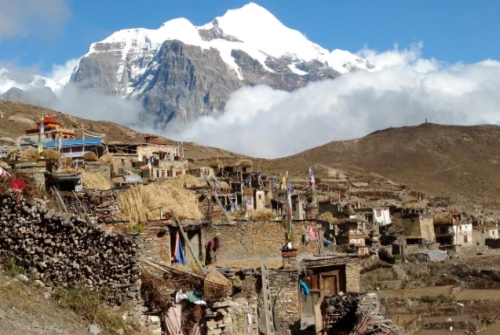Manaslu Circuit Trek is one of the best off-the-beaten-path treks in Nepal, offering an untouched Himalayan experience that combines breathtaking mountain scenery, authentic cultural immersion, and remote adventure far from the crowded trails of Everest and Annapurna. Nestled in the Gorkha District, this trek circles Mount Manaslu (8,163m) the eighth highest peak in the world taking trekkers through lush subtropical forests, deep river gorges, high alpine meadows, and dramatic mountain passes like the iconic Larkya La Pass (5,106m), which offers panoramic views of snow-capped giants such as Himlung Himal, Cheo Himal, Gyaji Kung, Kang Garu, Pungen Himal, and even Annapurna II.
Starting with a scenic drive from Kathmandu to Machha Khola via Arughat, the trail follows the roaring Budhi Gandaki River, winding through terraced farmlands, bamboo groves, rhododendron forests, oak woodlands, and traditional Himalayan villages, showcasing the natural diversity that makes this one of the best trek in Nepal for nature lovers. As you ascend, you’ll witness a fascinating cultural transition from the Hindu Brahmin and Chhetri communities in the lower regions to Tibetan-influenced Gurung villages at higher altitudes, where Tibetan Buddhism thrives and ancient customs are preserved.
The trek passes through spiritual and serene Buddhist monasteries such as Pungyen Gompa, Labrang Monastery, and Kargyu-Pemba Chholing, set amidst towering peaks and fluttering prayer flags, offering a deep connection to the sacred Himalayan culture. In villages like Lho, Sama Gaun, and Samdo, you’ll experience the resilient mountain lifestyle, where people live in harmony with nature through yak herding, subsistence farming, and centuries-old Tibetan Buddhist traditions passed down through generations.
Trekkers often enjoy side trips to Manaslu Base Camp and the glacial Birendra Lake, while enjoying warm hospitality in local teahouses, hearty traditional meals like dal bhat and tsampa, and moments of peace surrounded by pristine wilderness. Because the Manaslu region is a restricted area, trekkers also benefit from fewer crowds, making it ideal for those seeking solitude, authentic cultural encounters, and a remote Himalayan trekking experience.
Overall, the Manaslu circuit Trekking (MRT) is perfect for adventurous trekkers looking for the best remote treks in Nepal, with dramatic landscapes, spiritual depth, and a chance to connect with the ancient rhythm of life in the Himalayas.
Major Attractions of the Manaslu Round Trekking
The Manaslu Round Trekking is one of Nepal’s most captivating trekking experiences, offering a rare combination of remoteness, authentic culture, and breathtaking Himalayan scenery. Here are the key reasons why this trek is growing in popularity among nature lovers and adventure seekers around the world.
Off-the-Beaten-Path Himalayan Trek
Manaslu region remains one of the last untouched trekking routes in Nepal. Opened to foreign trekkers only in 1992, it has retained its pristine beauty due to strict government restrictions aimed at preserving the area's unique natural environment and cultural heritage. As a result, the Manaslu trail offers a quieter, more intimate trekking experience, far from the crowds found on the Everest Base Camp trek or Annapurna Circuit routes.
Though it’s considered a teahouse trek, the region is still relatively remote and less developed, which adds to its authentic charm. You'll pass through traditional villages where locals live much as they have for generations engaged in farming, animal husbandry, and Tibetan Buddhist practices making it a deeply immersive cultural journey.
The Challenging and Rewarding Larke La Pass
At an altitude of 5,106 meters, the Larke La Pass is the highest and most demanding point of the trek. Considered one of the most dramatic high mountain passes in Nepal, reaching this point is both physically challenging and emotionally rewarding. The pre-dawn ascent requires stamina, determination, and sometimes micro-crampons due to icy conditions. But once you reach the top, you're rewarded with panoramic views of snow-covered peaks such as Himlung Himal, Cheo Himal, Gyaji Kang, and Annapurna II, making every step worth the effort.
Low Foot Traffic for a Peaceful Trekking Experience
Compared to Nepal’s more commercial trekking routes, Manaslu sees far fewer visitors, making it a haven for trekkers seeking solitude and a deeper connection with nature. If you're someone who prefers a peaceful Himalayan escape without the distractions of large tourist crowds, the Manaslu Trek is the perfect choice. Fewer trekkers also mean more opportunities to interact meaningfully with locals, absorb the serenity of the mountains, and enjoy a more personal, introspective adventure.
Genuine Local Hospitality
In Nepal, there's a popular saying: “Guests are gods.” This hospitality is especially heartfelt in the Manaslu region, where villagers greet you with warm smiles, genuine curiosity, and a simple “Tashi Delek” a Tibetan greeting meaning “blessings and joy.” Whether you're staying in a teahouse or enjoying a local meal, you'll find that the people here offer warmth and generosity that make your trek not only memorable but emotionally fulfilling. It’s this human connection that often becomes the most cherished part of the journey.
A Snowy, Glacial Himalayan Paradise
For those who dream of walking through snow and crossing glaciers in the high Himalayas, the Manaslu Circuit delivers. Much of the Larke La Pass remains snow-covered for most of the year, and trekkers often traverse frozen streams, glacial moraines, and icy trails offering a true alpine trekking experience. The feeling of standing in the midst of Nepal's remote snowy wilderness, surrounded by jagged peaks and endless white, is nothing short of paradise for mountain lovers.
Why Choose the Manaslu Trek All Nepal Hiking ?
Manaslu Trekking with All Nepal Hiking means trekking with a trusted local company that combines deep regional knowledge, personalized service, and a strong commitment to safety and sustainability. Here's why we stand out for Nepal hiking and trekking adventures:
Local Expertise You Can Trust
Our management team and field staff are natives of the Manaslu region, making us true local experts. We know the terrain, culture, language, and hidden gems of the trail insights only locals can offer. This ensures a more immersive and authentic trekking experience.
Extensive Experience Across Nepal
With years of experience organizing trekking tours throughout Nepal including the Annapurna Circuit, Everest Base Camp, Langtang Valley, and of course, Manaslu Round we bring a level of professionalism and logistical expertise that ensures your journey runs smoothly from start to finish.
Safety and Communication First
Your safety is our top priority. Our treks are equipped with essential safety gear including two-way walkie-talkies, satellite phones, and radio sets for emergency communication in areas without mobile coverage. Our guides are trained in first aid and high-altitude safety protocols, ensuring you're in good hands at all times.
Personalized, High-Quality Services
We offer comfortable accommodations, hygienic meals, and take care of all necessary permits and paperwork. All treks can be custom-tailored to match your interests, fitness level, and travel schedule whether you're hiking the Manaslu Circuit or exploring other trekking routes in Nepal.
Sustainable and Responsible Tourism
We are committed to eco-friendly trekking and sustainable tourism. This includes minimizing waste, respecting local customs, and supporting community-based tourism that benefits the people living in the remote Himalayan villages we pass through.
Exceptional Value for Money
Our trekking packages are thoughtfully designed to provide exceptional value without compromising on quality. You’ll enjoy reliable service, experienced guides and porters, seamless logistics, and a memorable experience that goes beyond just reaching the destination.
Why is Manaslu Circuit Trekking a Cultural Experience Not Just a Natural One?
While Manaslu Circuit Trekking is widely celebrated for its stunning Himalayan landscapes, glacial rivers, and alpine forests, it’s also one of Nepal’s most enriching cultural treks. This route is not just about mountains and trails, it's a spiritual and cultural journey through some of the most authentically preserved Himalayan communities in Nepal.
As you trek from the lower foothills to the high Himalayas, you’ll encounter a fascinating blend of Hindu and Buddhist traditions. In the early stages of the trek, such as in Machha Khola and Jagat, the cultural landscape is shaped by Hinduism, and you'll notice temples, traditional homes, and Hindu rituals that are common to the middle hills of Nepal.
As you ascend further into the upper Manaslu region, particularly from Namrung to Samagaon and Samdo, the cultural identity shifts entirely. These villages are home to ethnic Tibetan descendants who follow Tibetan Buddhism. This transformation is visible in every aspect from architecture to clothing, language, lifestyle, and spiritual practices.
Sacred Symbols of Tibetan Buddhism
You’ll be amazed by the presence of chortens (stupas) at village entrances, beautifully carved Mani walls (prayer stone walls), and prayer flags fluttering in the wind—all integral parts of the Tibetan Buddhist tradition. The locals still wear traditional Tibetan-style attire, especially the elderly, and their simple, spiritual way of life connects them deeply to nature and faith.
Monasteries and Buddhist Teachings
The region is also home to several ancient monasteries where you can witness monks chanting, studying scriptures, and living in harmony with nature. One of the most significant is Mu Gompa, located in the Tsum Valley extension of the Manaslu region. Though it requires a detour, visiting this monastery is a profound cultural highlight. Here, you can also visit the sacred caves of Milarepa, the revered Tibetan Buddhist saint, where he is believed to have meditated centuries ago.
Local Hospitality and Cultural Immersion
The warmth and hospitality of the people living in the Manaslu region elevate the cultural experience. Trekking here is not just about observing; it’s about immersing yourself in local traditions, engaging with villagers, learning about Buddhist philosophy, and perhaps even participating in daily rituals.
Whether you’re dining in a traditional teahouse, observing festivals, or simply sharing stories with locals over a cup of butter tea, the trek offers countless moments of meaningful cultural exchange. Manaslu Circuit Trek a cultural journey is how seamlessly it blends spiritual heritage, remote village life, and sacred landscapes. This is not just a trek through mountains, it’s a walk through ancient beliefs, resilient traditions, and a way of life untouched by modern distractions.
How is the Itinerary of the Manaslu Circuit Trek Designed?
The Manaslu Circuit Trek itinerary is carefully crafted to provide an unforgettable mix of breathtaking mountain scenery, gradual altitude acclimatization, and deep cultural immersion. This adventure-packed journey begins in Machha Khola, following a scenic drive from Kathmandu via Arughat, a charming town straddling the Gorkha and Dhading districts in central Nepal.
From the very beginning, the trail closely follows the mighty Budhi Gandaki River, gradually ascending through dramatic river gorges, terraced hillsides, and traditional villages. As the trek progresses into the Nupri region, you’ll start to see an increasing Tibetan influence reflected in local customs, dialects, dress, and architecture. The region is also a protected habitat for rare wildlife species such as the elusive Snow Leopard, Himalayan Thar, Blue Sheep, and the endangered Musk Deer, making this trek a haven for nature and wildlife lovers.
A significant cultural and spiritual landmark along the route is Pungyen Gumba (4,400m), a serene monastery set beneath the towering Manaslu massif. This peaceful spot offers not only cultural insight but also incredible views of Mt. Manaslu, glaciers, and surrounding peaks, making it a favorite acclimatization hike from Samagaon.
The trail continues northward, eventually reaching the snow-covered and rugged Larkya La Pass (5,106 meters) the highest point of the trek and one of the most challenging and scenic high mountain passes in Nepal. Known for its exposure to strong winds and high altitude, the trek across the pass begins before sunrise (around 3 a.m.) to ensure safe crossing before weather conditions deteriorate. Micro crampons are often required during icy conditions, especially during the shoulder seasons.
From the top of Larkya La, trekkers are rewarded with a 360-degree panorama that includes Annapurna II rising ahead and a formidable ridge of peaks including Cheo Himal, Himlung Himal, Gyaji Kang, Nemjung, and Kang Guru, all set above cascading glacial streams and vast icefalls. Looking back from the pass offers a surreal perspective on the path you’ve climbed but the most awe-inspiring views appear after the pass, along a stunning glacial corridor that descends into Bimthang.
The final descent takes you through alpine meadows, dense pine and rhododendron forests, and picturesque Gurung villages before merging with the Annapurna Circuit trail at Dharapani. From here, you’ll take a drive back to Kathmandu, completing one of the best Himalayan circuit treks Nepal has to offer.
Are You Planning a Short Manaslu Circuit Trek?
If you're short on time but still want to experience one of the most beautiful and remote trekking routes in Nepal, the short Manaslu Circuit Trek is a perfect choice. This trek offers a condensed version of the full circuit while still covering the major highlights of the Manaslu region, including cultural villages, dramatic landscapes, and panoramic Himalayan views all within a short trekking itinerary in Nepal.
One of the most unforgettable stops on this trek is the village of Samagaon, a traditional Tibetan-influenced settlement nestled in the heart of the Himalayas. Here, trekkers usually spend an extra day acclimatizing, which also serves as an opportunity to explore the area's unique culture and stunning surroundings. During your rest day in Samagaon, you can visit ancient Buddhist monasteries (Gompas), hike to Manaslu Base Camp, or enjoy jaw-dropping views of Mount Manaslu (8,163m) and Birendra Lake a pristine glacial lake surrounded by towering peaks.
After acclimatizing in Samagaon, the trail leads you to Samdo, another beautiful Himalayan village, before ascending to the iconic Larkya La Pass (5,106 meters) the highest point of the trek and one of the best viewpoints in Nepal for mountain scenery. From here, you’ll descend through the lush forests and alpine meadows of the Manaslu Conservation Area, passing through Bimthang, a tranquil valley with panoramic views of Himlung Himal, Cheo Himal, and Annapurna II.
The short Manaslu Circuit Trek usually ends in Dharapani, where the trail merges with the Annapurna Circuit Trek route. From Dharapani, you’ll take a scenic drive back to Kathmandu, completing your adventure. For those who have a bit more time or want to extend their journey into a lesser-visited area, the Tsum Valley Trek extension is highly recommended. This hidden valley offers deeper insights into Tibetan Buddhism, isolated monasteries, and untouched Himalayan culture.
The short Manaslu trek is ideal for adventurers looking for a moderate to challenging trek in Nepal that combines natural beauty, cultural exploration, and off-the-beaten-path experiences, all in under two weeks.

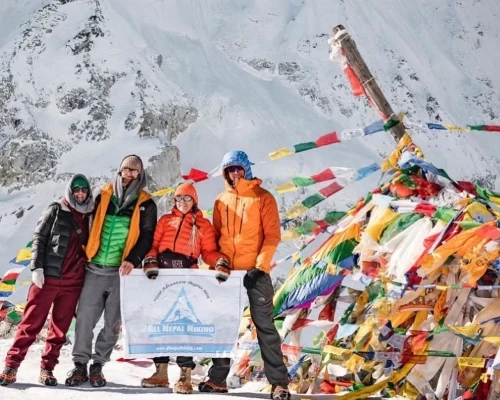
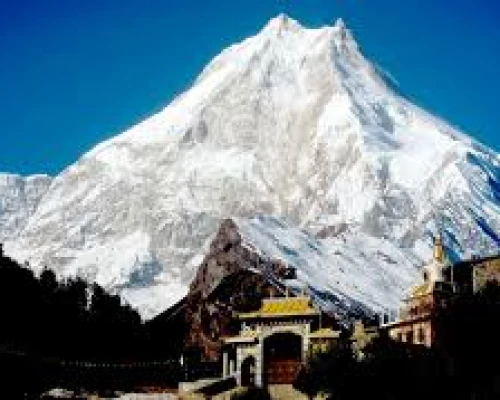
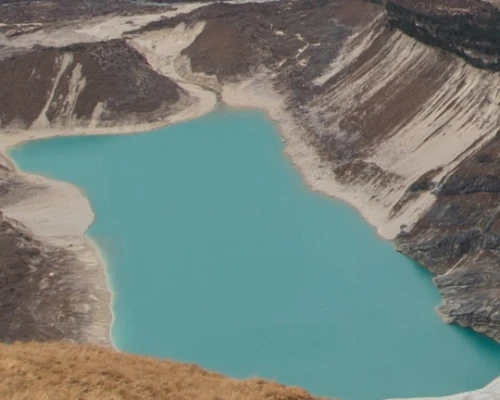
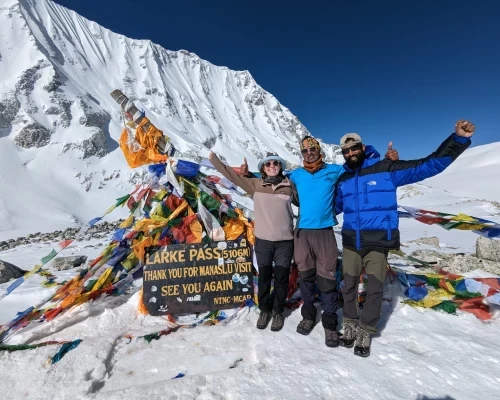
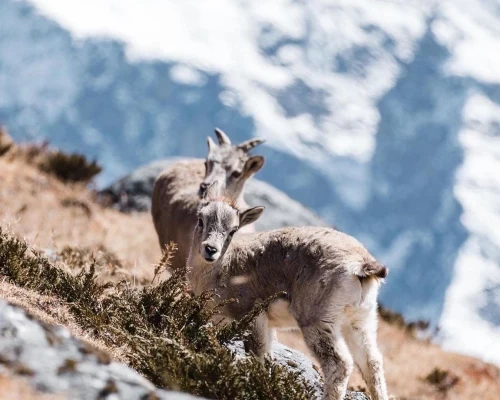
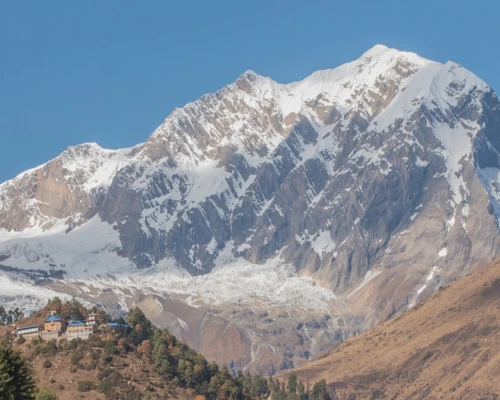
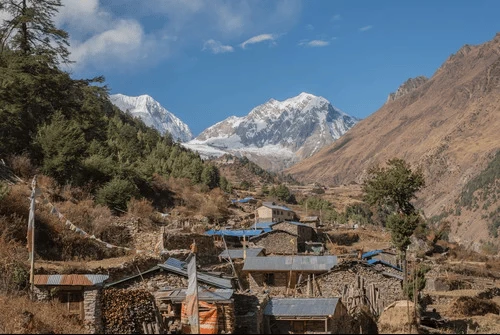
 based on 6 reviews
based on 6 reviews